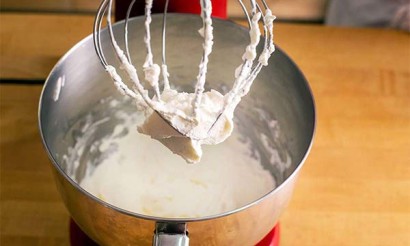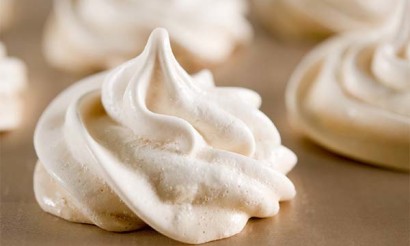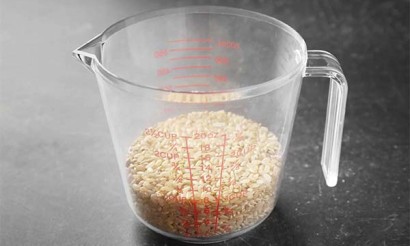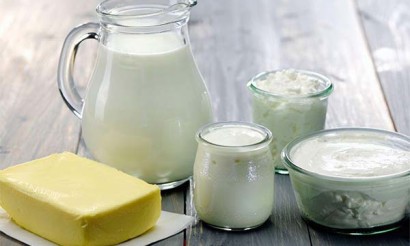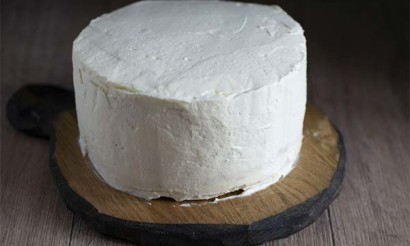How to peel horseradish quickly and without tears
Every self-respecting dacha owner keeps on his homestead plot at least one large sprawling attractive horseradish plant, without the leaves of which not a single jar of cucumbers or tomatoes are canned for the winter. But sometimes home canning is the end of its use. Although almost everyone loves horseradish as a condiment - especially for cold cuts - practically everyone loves it, few people take it up because they are used to thinking that this process is long and laborious, and thanks to the smell of horseradish it is also tear-forming. The fact is that the plant has essential oil, which irritates practically all mucous membranes - the nose, eyes and mouth. This essential oil is the reason for the nose fart, the tears, and the reluctance to engage in horseradish processing.
In fact, if you take the matter wisely and take the methods worked out by experienced, experienced dacha owners, to prepare a tasty spice for the winter is not so difficult.
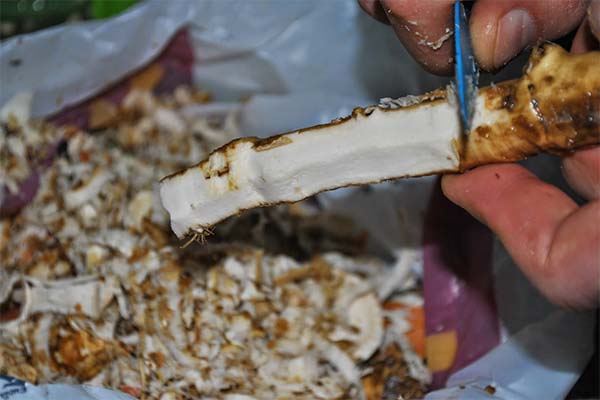
It is important to know that the roots, which are dug in September, are the best for tear-jerking seasoning. They accumulate the maximum amount of nutrients, minerals and vitamins, in addition, at this time of year horseradish is especially "wicked". Give preference to not very small and thin roots: those with a length of at least 30 cm and a thickness of 3 to 6 cm are ideal. Thinner and shorter ones are better to bury back in the bed, let them grow further next year.
Should the horseradish root be peeled?
The root dug out of the ground can be white, which does not seem to need to remove the skin, and yellowish-brownish. In fact, even the white peel is tough and rough, and the more yellowish or even brown, the rougher it is. It doesn't matter if the plan is to dry the product and grind it into a powder. But horseradish rubbed through a grater or ground in a meat grinder will contain its fibers, which are difficult to chew.
In addition, if horseradish is not dug in your own garden, but bought at the market, it is difficult to know under what conditions it grew. Maybe it has been exposed to pesticides or herbicides, and they tend to accumulate in the skin. Therefore, before processing the root, it must always be cut off.
Young and thick roots do not have overripe skin, it remains light and soft, and no chemicals have time to accumulate, so it is acceptable to leave it to save time. It will not affect the consumer properties of the final product of horseradish very negatively.
Preparing the product for cleaning
To make horseradish more elastic, it was easier to remove dirt from it, and the root itself is easier to clean, it should be soaked in cold water. For fresh, freshly dug roots 5 to 6 hours of such "water procedures" is enough, and the vegetable that has lain after digging in the refrigerator and slightly wilted, will need much more time - 3 to 7 days, and the water must be changed daily.
Wash away the dirt and sand stuck to the roots with a brush, thoroughly cleaning all the depressions, nodes and nodules. If there are special hard rough gloves for peeling young potatoes - you can scrape off the dirt with them.
It is convenient to wash horseradish in a basin with clean, cool water, after which you will only need to rinse the roots with running water.
If it is decided to treat horseradish on the homestead and the household has a mini car wash, it will be quick and easy to wash the rhizomes. You need to put the roots in a large colander or sieve and run the device. A strong stream of water will scrape away all the grains of sand that stuck on the vegetable.
To facilitate subsequent cleaning, horseradish roots can be lightly frosted after washing. Wash and dry with paper towels, place the rhizomes in plastic bags, tie them tightly and put them in the freezer for an hour and a half or two hours. The skin will freeze and become easy to remove from the pulp. In addition, after the freezer, horseradish is less irritating to the mucous membranes and does not cause tears as much.
How to peel horseradish at home
Several kitchen tools are suitable for cleaning horseradish: you can use a knife, a vegetable peeler, a metal grater and a tough metal sponge - the kind you use to clean burned pans.
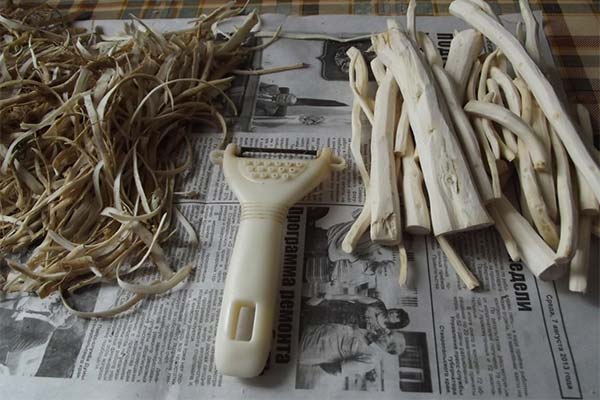
Horseradish is known to secrete poisonous essential substances that cause copious tears while cutting or peeling it. If the weather permits, it is better to peel the rhizomes outside - then the wind will carry the esters aside, and the eyes will not be so much irritated.
Some experienced hostesses wear a mask or goggles when working with horseradish, if there is one in the house, which reduces the tears to almost zero - even in the cramped conditions of a small kitchen. But if you don't have a mask or goggles, you should definitely open a window and put a fan nearby so that it blows away the etheric substances in the direction of the open window. But the nose and mouth are still better to cover either a medical mask or simply tie a scarf or cotton kerchief to reduce the effects of essential oils on the respiratory tract.
If cleaning with a knife, you should take care that it is very sharp, then the peel will be easy to remove. It is better to have two sharp knives at hand: a small one to cut off the skin and cut out the knots, and a large one to cut off the sluggish or spoiled ends. The principle of peeling horseradish is no different from that of carrots.
Large pieces of root should be cut crosswise - either in half or in three parts, so that it was convenient to hold in hands. It is better to remove the skin in thin strips, taking care not to cut it off in a thin strip, as the body of the root will inevitably be cut off along with the skin. It's better to remove the skin in thin strips, trying not to touch the inner white layer.
This method is convenient because you can peel horseradish rather quickly and neatly, the surrounding furniture remains clean, because the skin does not fly anywhere from under the knife. But due to the fact that the knife is very sharp, you must remain very careful, because there is always a danger of cutting yourself.
It is not difficult to peel horseradish with a vegetable peeler, the same one that is usually used to peel carrots or potatoes. This way to cope with the case is slightly slower than a knife, but it is quite convenient. The amount of waste is minimal, and the scraped skins do not fly away.
If there are several roots, they are young and have about the same length and thickness, you can speed up the process by putting them on a cutting board parallel to each other and, pressing the roots tightly one to another, peel them simultaneously. Of course, the ideal result will not be achieved that way, but still most of the vegetables will be peeled fairly quickly, so you will only have to inspect each spine and use a knife or the same vegetable peeler to remove those fragments of skin that did not give in the first time. With such a "fast" processing of the vegetable, there is a risk of injuring your fingers, so you should not be distracted and observe the safety technique.
An ordinary metal grater for carrots is also suitable for removing the skin from horseradish, but with its help it is better to peel the roots not overgrown, and those with soft and delicate skin that has not had time to coarsen.
The washed roots should be placed on a cutting board and, holding it with one hand, carefully, without strong pressure, rub the horseradish gently, softly, slowly and smoothly in a direction almost parallel to its surface with the other. The grater should be taken with the smallest holes.
There are, of course, disadvantages to this method. First, it is not very economical, because together with the skin can be erased and part of the body of the root itself. Secondly, you will not be able to remove the skin cleanly with a grater, you will have to finish the incomplete places with a knife. And thirdly, you should take care not to injure your hands, which often happens when you use a grater.
You can use a metal dish sponge to clean horseradish. Of course, this sponge will not remove the thick, rough brownish skin from mature roots, but it will cope with young roots quite well.
For making horseradish, it is better to buy a new washcloth, because used kitchen sponges usually accumulate an enormous amount of germs. If you could not buy one, you will have to work hard to wash a used one, then soak it in water and add baking soda to boil it. The tool thus sterilized will be suitable for further use.
Clean the horseradish, holding the root with the left hand, and with the right hand confident, fast and sharp movements move the sponge from bottom to top and from top to bottom, without pulling away from the surface of the root. The root itself should be slowly rotated around its axis, so that all its sides are treated with the sponge. It is more convenient to carry out this procedure under a stream of cool water.
In this way clean the roots one by one, and then, armed with a small sharp knife, remove the remaining uncut fragments of the peel. It is best to clean straight stubs with a minimum number of knots, branches and depressions.
The advantage of this cleaning method is that it is injury-free and practically waste-free: if you closely monitor the process and do not get carried away rubbing one spot several times, only a thin layer of skin is peeled off.
How to wash your hands after handling horseradish
Dirty hands after handling horseradish cannot be washed with plain water or even regular toilet soap. Dirt and horseradish juice not only stain your hands a dark color, but also penetrate all the cracks in the skin. Still, it's easy to get your hands clean.
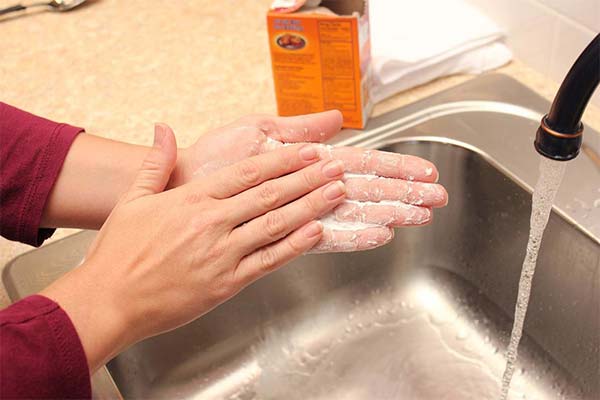
The first method is lemon. This fruit always comes to the rescue when you need to return the hands to their former neat appearance after working in the ground, cleaning mushrooms or hiking in the woods for blueberries.
You need only one circle of lemon, about 1 cm thick, with which you need to rub your palms, gently squeezing to release the juice. When the skin has lightened, you can pay attention to the nails: dip them in the lemon pulp for about a minute. Then rinse your hands with cool water and moisturize, preferably with glycerin.
If you do not have lemon in the house, you can use 9% table vinegar: wipe your hands with a cotton pad soaked in sour liquid, and then thoroughly scrub your nails. This method is somewhat longer than the previous one. And to achieve such a perfect result, as with lemon, it is unlikely to succeed.
Some housewives make their hands look good with baths with ammonia and hydrogen peroxide. This method is especially good for those women who have cracks, cuts or other wounds on their hands, because of which lemon or vinegar is undesirable to use to avoid a "pinching" and burning sensation. But it is not suitable for ladies, who categorically do not tolerate the smell of ammonia. In addition, when using this technique, you should be careful and try not to inhale the vapors of the mixture, because they are not useful.
It is necessary to take 2 glasses of water - very warm, almost hot, dissolve in it 3 tablespoons of dishwashing liquid, add a teaspoon of ammonia and a dessert spoon (or 2 teaspoons) of hydrogen peroxide. Stir the solution, dip your hands in it for about five to seven minutes, after which clean your palms and nails with a soft brush.
If you still have dark spots, rub them with a cotton pad soaked in hydrogen peroxide, then wash your hands with running warm water and apply a nourishing or emollient cream with glycerin.
It is possible not to add ammonia to the solution, the fumes in this case will be absolutely harmless, but then you must be prepared that your hands will not wash clean.
But if you handle horseradish in rubber or silicone household gloves, you can keep your hands clean, and then you do not have to worry about how to wash them. By the way, from possible allergic reactions to horseradish and its irritating effect on the delicate skin of the hands gloves will also save.
«Important: All information on this site is provided solely for introductory for your own reference only. Check with your health care professional before using any of the recommendations. specialist before you use any of the recommendations. Neither the editors nor the authors shall be liable for any possible harm caused by materials."


